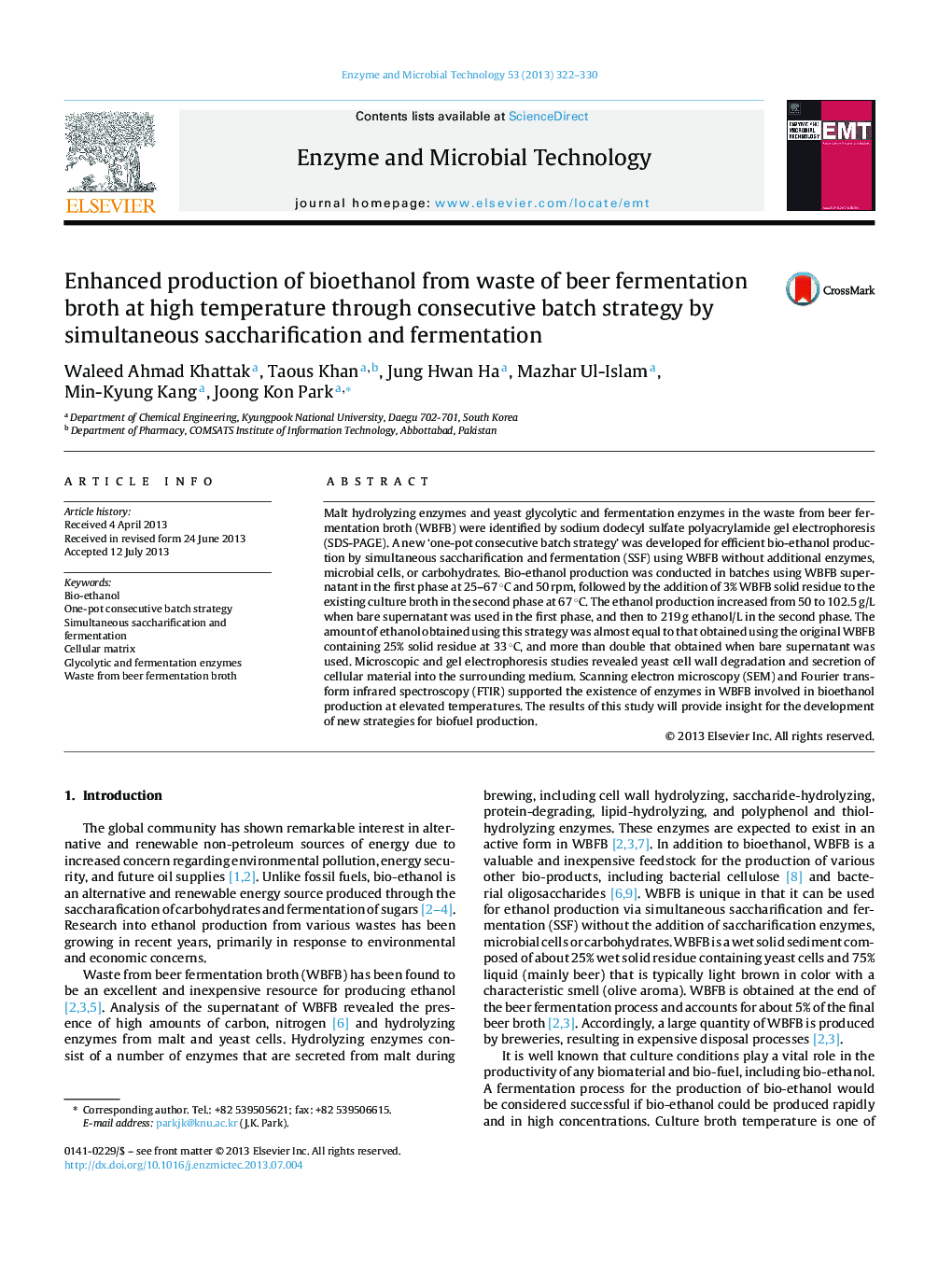| کد مقاله | کد نشریه | سال انتشار | مقاله انگلیسی | نسخه تمام متن |
|---|---|---|---|---|
| 17129 | 42644 | 2013 | 9 صفحه PDF | دانلود رایگان |

• Hydrolyzing enzymes from malt and glycolytic and fermentation enzymes from yeast cell were found in WBFB supernatant.
• Enhanced bioethanol production was achieved at high temperature (67 °C) in the absence of live yeast cells.
• The effect of only 3% sediments at high temperature was almost equal to that obtained using original WBFB, and more than double that obtained with the bare supernatant at normal temperature.
• Morphological studies revealed the rupturing of yeast cells and excretion of intracellular matrix to the media.
• This study reveals the involvement of cell free enzyme system in the higher ethanol production.
Malt hydrolyzing enzymes and yeast glycolytic and fermentation enzymes in the waste from beer fermentation broth (WBFB) were identified by sodium dodecyl sulfate polyacrylamide gel electrophoresis (SDS-PAGE). A new ‘one-pot consecutive batch strategy’ was developed for efficient bio-ethanol production by simultaneous saccharification and fermentation (SSF) using WBFB without additional enzymes, microbial cells, or carbohydrates. Bio-ethanol production was conducted in batches using WBFB supernatant in the first phase at 25–67 °C and 50 rpm, followed by the addition of 3% WBFB solid residue to the existing culture broth in the second phase at 67 °C. The ethanol production increased from 50 to 102.5 g/L when bare supernatant was used in the first phase, and then to 219 g ethanol/L in the second phase. The amount of ethanol obtained using this strategy was almost equal to that obtained using the original WBFB containing 25% solid residue at 33 °C, and more than double that obtained when bare supernatant was used. Microscopic and gel electrophoresis studies revealed yeast cell wall degradation and secretion of cellular material into the surrounding medium. Scanning electron microscopy (SEM) and Fourier transform infrared spectroscopy (FTIR) supported the existence of enzymes in WBFB involved in bioethanol production at elevated temperatures. The results of this study will provide insight for the development of new strategies for biofuel production.
Journal: Enzyme and Microbial Technology - Volume 53, Issue 5, 10 October 2013, Pages 322–330